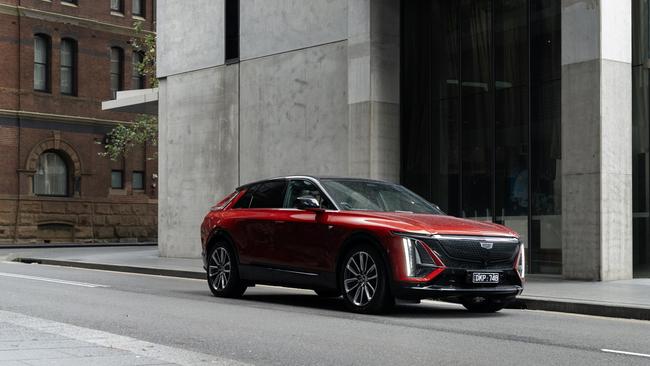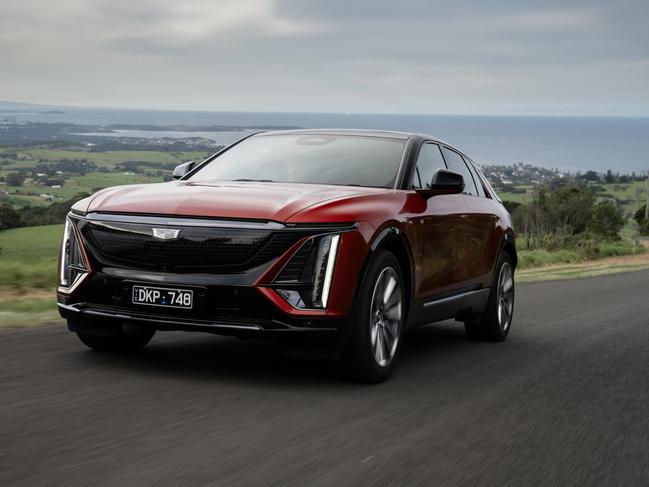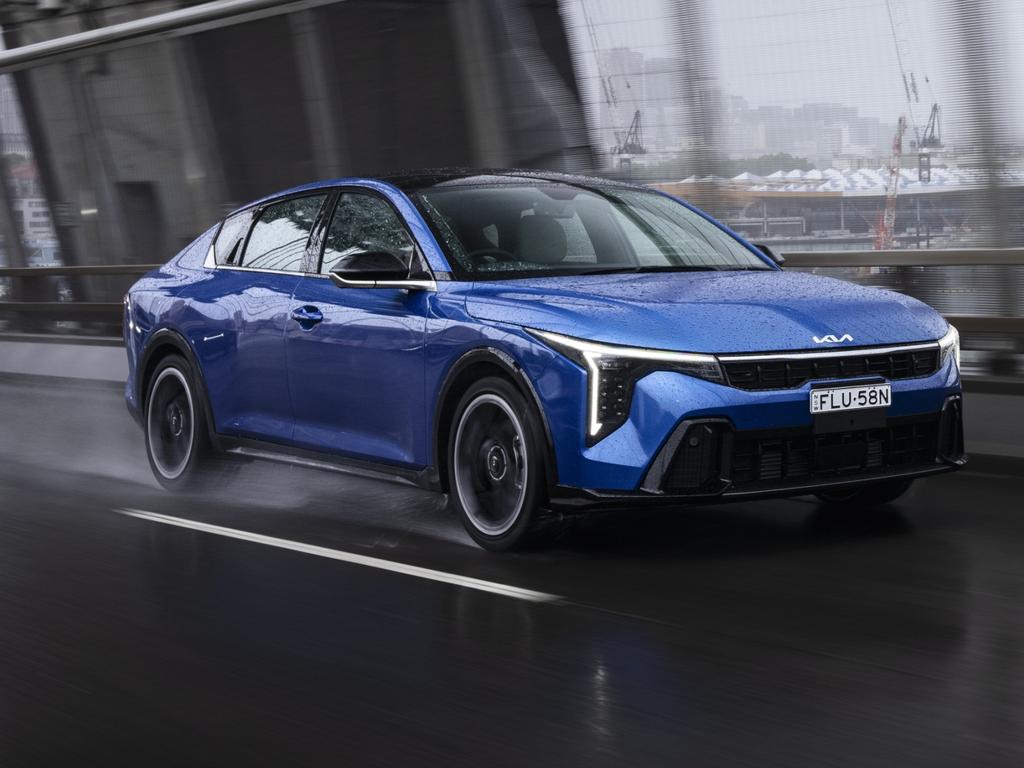Cadillac finally launches in the Australia market ... with an EV
How strange it is that the American giant belatedly arrives in Australia with a vehicle designed to take on Lexus and Audi. I bet you’re wondering if it’s any good?

For what feels like decades now, I have brazenly bemoaned the moaning, whining and squealing safety systems fitted to modern cars. Was there not some other way, I pleaded, to keep people safe without filling their ears with bings, bongs and beeps? Really, then, I have no right to complain that Cadillac’s first foray into the Australian market has answered my cries with a system that tickles your bum instead.
Cadillac’s nomenclature of “Safety Alert Seat” really doesn’t do it justice; even reading about it beforehand wouldn’t have provided adequate warning for the shock therapy the new Lyriq EV applies to your nether regions.
But first, what is a Cadillac? Describing it as the American Lexus, built by one of the world’s biggest car makers, General Motors, is an efficient shorthand, but it’s also best described as a brand that’s been threatening to drop its giant land yachts on the Australian market since last century, but never actually done so.
I’d like to suggest this is because we’re too cool for CocaColonisation, but the fact that we’ve now quietly started calling pick-up trucks “utes” and buying them in unfeasible numbers – not to mention worshipping the wildebeests on wheels that RAM makes – suggests otherwise.
The kind of men who have few worthwhile hobbies (let’s call them car enthusiasts) would, of course, describe Cadillac as being a brand that has long made giant, chrome-shiny, V8-powered vehicles with lots of wings and fins for the US market.
Today, however, Cadillac is finally and actually launching locally as an all-electric brand, kicking off with the Lyriq.
I leapt into this thing full of curiosity and excitement about what an effectively all-new brand would have to offer, but I was immediately waylaid by the violent vibration of the driver’s seat. Get too close to a wall on your right and that buttock cops it; move to your left without indicating and your left side is zapped, and get too close to the car in front and your whole backside is blitzed.

The first few times it happened, I shouted something that sounded like “buck me”, and then panicked that the Cadillac might have voice control and attempt to do something horrible to my backside.
The system activates so regularly that I’m still not sure what all of the inputs are that can set it off – birds flying, the colour red, cyclists, Tuesdays – but if you’re the kind of person who enjoys that sort of thing you could have a great time by driving a Lyriq into a tight garage.
Vibes aside, the Cadillac was comfortable, although the seating position is redolent of a big American armchair, with insistent and intrusive elbow support. The steering wheel is also US-spec large.
The Lyriq drives smoothly and effortlessly, as most EVs do, and its ride/handling balance was pleasantly refined. I must admit I was shocked to hear it offers 388kW and 610Nm, because it doesn’t feel that wildly overpowered, and subtlety is not a typical American trait.
I was impressed by the fact that no matter how much I drove it, the battery gauge never seemed to move, so I’m fully buying its proposed 530km range.
Overall, the Lyriq gives off an air of classiness roughly equivalent with a Lexus, which is also what it looks like from the outside. It might be damning it with faint praise to say it’s the best-looking modern Cadillac I’ve ever seen. It does feel like a shame that a marque that used to make big thumping vehicles with lumpen engines is launching in Australia as an EV brand, but that’s what they get for taking so long to get here.

When trying to sum up the Cadillac I was a little lost, because I’m not exactly sure where it sits in the market or what it’s trying to compete with (a colleague told me it’s a competitor for Audi’s $140,600 Q8 E Tron, but I think he must have been high).
Pondering all this, I asked my 13-year-old daughter what she thought, which is unfair, not only because she can’t drive but because, being a teenager, she’s short on words and inclined towards the brutal. She shrugged, cheek-popped and eventually described the Lyriq as “basic”, and then, begrudgingly, “spacious”.
Her basic putdown made me realise I was not aware of the price, and when I tried to guess it I finished several miles away. The Lexus RZ EV seems the most likely competitor, and I’ve long thought it is hugely overpriced at $121,675. The Lyriq is at least cheaper at $117,000, but that still seems like quite a bit to ask for a brand that hasn’t exactly established itself as premium in this market.
It is possible that once word of its vibrating-seat technology gets around it might attract a certain fetishistic following, but not from me.
Cadillac Lyriq
Engine: Dual permanent magnet synchronous motors (388kW/610Nm), 102kWh battery
Transmission: One-speed reduction gear, all-wheel drive
Efficiency: 22.5kWh per 100km; range 530km
Price: $117,000
Rating: 3/5




To join the conversation, please log in. Don't have an account? Register
Join the conversation, you are commenting as Logout